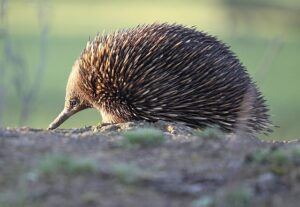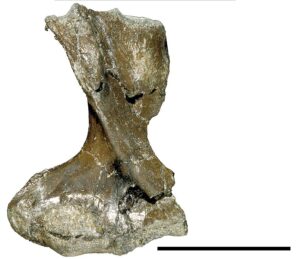Ancient origin of swimming in platypuses revealed
30th April 2025, 12:32 pm
A new study has revealed fascinating insights into the history of how swimming developed in platypuses and other egg laying mammals.
Published today in the journal Proceedings of the National Academy by an international team lead by the University of New South Wales in Australia and including the University of Salford in the UK, the paper shows how researchers uncovered evidence that the ancient ancestors of modern egg-laying mammals were swimmers.
There are two types of egg-laying mammal, or monotreme, alive today. The platypus of eastern Australia hunts for food while swimming, using a soft bill that can sense tiny electrical currents to find small crustaceans and insect larvae living in rivers and lakes. The echidnas of Australia and New Guinea, by contrast, are fully terrestrial, and feed on ants, termites, and earthworms, which they dig up with powerful claws. Exactly how and when these different lifestyles evolved has been controversial, but a fossilised arm bone of an ancient Australian mammal has provided new information that has helped solve this puzzle.
The fossil is an upper arm bone, or humerus, from a mammal named Kryoryctes, which lived about 108 million years ago in what is now the south coast of Victoria, southeastern Australia. The fossil site where Kryoryctes was found is called Dinosaur Cove, which contains the remains of dinosaurs and other ancient creatures that lived in Australia during the Early Cretaceous period.
By comparing the anatomy of Kryoryctes with other fossil mammals, the research team was able to produce an evolutionary tree showing that Kroryctes is an ancient relative of the platypus and echidnas. They also found that the external shape of the humerus of Kryoryctes is most similar to that of echidnas. However, by using a powerful CT scanner, the team was able to examine the internal structure of the bone as well. This revealed the presence of thick walls, as also found in the platypus and other swimming mammals such as muskrats and otters, but unlike the thin walls in the humerus of echidnas. Professor Sue Hand of the University of New South Wales, who led the study explained that “thick walls make the bone heavy, acting as ballast that allows swimming mammals to easily dive down to forage for food.”
Based on this new evidence from Kryoryctes, the team concluded that the ancestor of the platypus and echidnas was probably a swimming, platypus-like animal, and that the terrestrial lifestyle of echidnas evolved later. Professor of Evolutionary Biology, Robin Beck, from the University of Salford, said: “Previously, some scientists suggested that echidnas evolved from swimming ancestors based on features of their anatomy and evidence from their genomes, but this is the first direct evidence that swimming is probably ancestral for monotremes, and that echidnas have lost this lifestyle.”
This makes echidnas one of only a few groups of mammals to have switched to a fully terrestrial lifestyle from a swimming ancestor. Exactly when echidnas made this switch, however, is unclear, because the echidna fossil record is very incomplete. “To fully understand this transition,” Beck added, “we will need a lot more fossils!”
The full paper is available here: https://www.pnas.org/doi/10.1073/pnas.2413569122
Figure 1. The platypus. Image Credit: Charles J. Sharp (Creative Commons Attribution-Share Alike 4.0).
Figure 2. The short-beaked echidna, one of four echidna species alive today. Image Credit: Wildlifecartoons (Creative Commons Attribution-Share Alike 4.0).
Figure 3. Arm bone of the 108 million year old monotreme Kryoryctes. Scale bar: 25 mm. Credit: Stephen F. Poropat, Phil R. Bell, Lachlan J. Hart, Steven W. Salisbury, & Benjamin P. Kear (Creative Commons Attribution-Share Alike 4.0).


Next Article
Supporting hospitality one step at a time: Kuits join Nell’s Pizza to sponsor the Hospitality Hike